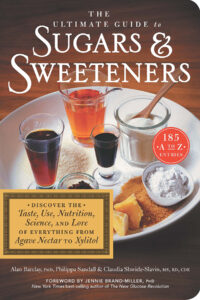SWEET HISTORY

“Sugar and spice and everything nice that’s what little girls are made of…”
Robert Southey
Long before the recent association of sugar with words such as “toxic” or “poison”, sugars and sweetness were used as terms of endearment or affection amongst people of all ages:
- Cupcake
- Honey (bun / pie)
- Peaches
- Sugar bun / babe
- Sweetie
are but a few that will be familiar to most.
Indeed, sweet foods and drinks have long been prized by humankind. There’s good reason for this too. The first food we enjoy from birth is naturally sweetened with the sugar lactose – milk. The appealing sweetness of the lactose in breast milk is part of a perfect nutritional package containing all the proteins, fats, vitamins, and minerals that babies need to grow and thrive and fight infection. Research shows that new babies prefer sweet tastes from birth. They will choose to suck on bottles of sweetened water but will turn away or cry if given something bitter or sour to taste. Infants are frequently weaned on to pureed fruits and vegetables that are naturally sweet from their intrinsic sugars.
Sugars in fruit and honey have provided energy in human diets for millions of years—ever since primates began evolving on a steady diet of fruit and berries in the rainforests of Africa fifty million years ago. The appreciation of the sensation of sweetness runs deep in the human psyche. Our hunter-gatherer ancestors positively relished concentrated sugars such as dates, dried fruit, sugar bag, honey, and even honey ants.
Seeking sweetness made sense for early humans, whose energy-hungry, expanding brains would have greatly benefited from the calories and nourishment these sweet foods provided, especially when the hunter came home empty-handed. The earliest evidence we have for seeking sweetness is in rock art by our hunter-gatherer ancestors from all around the world that depicts honeycombs, swarms of bees, and honey collecting and that date back many thousands of years.
But, naturally appealing or not, nutritive sugars and sweeteners such as honey are not health foods, because they provide us with energy (calories/kilojoules) but not much else in the way of nutritional benefits. So, we most certainly are not going to encourage people to consume as much as they’d like. Moderation matters if you want to achieve and maintain a healthy weight and have good dental health.
What’s moderate? Currently, the World Health Organization (WHO) recommends that people should not eat more than 10 percent of their total daily calories from free sugars. For a typical adult consuming 2,000 calories (8,400 kilojoules) a day, this is equal to around 12 teaspoons—200 calories (840 kilojoules). This is based on observations in epidemiological studies that the risk of developing tooth decay increases when a population’s average consumption of free sugars (that is, sugars added to foods, plus the sugars in honey, syrups (e.g., maple, rice, etc…) and fruit juices) goes above 10 percent of their energy intake.
The take-home lesson is that adding a sprinkle of sugar or a drizzle of honey can be a great way to encourage us to eat healthy foods. This month’s YOUR GI SHOPPING GUIDE and GOOD CARBS FOOD FACTS provide some great examples.

Read more:
- Alan Barclay, Philippa Sandall, and Claudia Shwide-Slavin. The Ultimate Guide to Sugars and Sweeteners. The Experiment, 2014.

Dr Alan Barclay, PhD, is a consultant dietitian and chef with a particular interest in carbohydrates and diabetes. He is author of Reversing Diabetes (Murdoch Books), and co-author of 30-plus scientific publications, The Good Carbs Cookbook (Murdoch Books), Managing Type 2 Diabetes (Hachette Australia) and The Ultimate Guide to Sugars and Sweeteners (The Experiment Publishing).
Contact: Follow him on Twitter, LinkedIn or check out his website.







